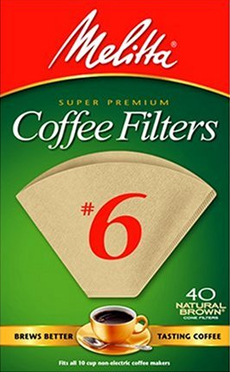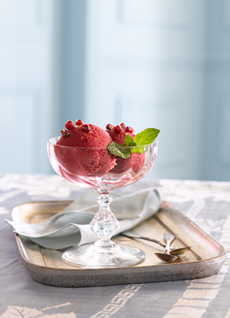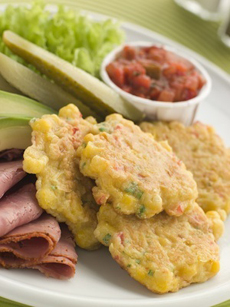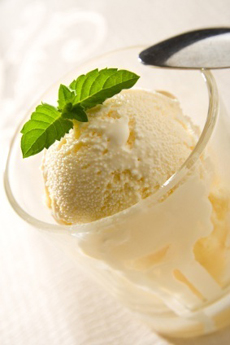|
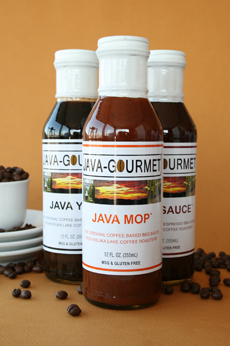
Sauces are just the beginning of the coffee-
accented products from Java-Gourmet. Photo
by River Soma | THE NIBBLE.
|
|
Java-Gourmet is the story of two Bostonians who relocated to the sylvan shores of Keuka Lake in upstate New York. Surrounded by natural beauty, they began to roast coffee to order, slowly air-cooling the beans to retain their natural coffee oils—which hold not only flavors, but also antioxidants.
A few years later, they released Java Rub, giving zing to pork, poultry, steak, beef and turkey burgers, chili, enchiladas, tacos and other foods. An artisanal, coffee-based specialty food company was born.
Since then, the company has created a large line of products—more than 30 products, a lineup that’s unique in the marketplace—based on coffee (coffee is a favorite ingredient of Bobby Flay and many other chefs). If you haven’t yet cooked with coffee, it both adds a depth of flavor and helps to caramelize the surface of the food.
A Cornucopia Of Coffee Products. The rubs are joined by sauces and marinades, a coffee-based brine, a salt grinder (sea salt, peppercorns and coffee beans) and a finishing salt (a grinder with coffee beans plus garlic, paprika, herbs, spices, salt and pepper) that’s good on everything, including popcorn.
|
|
The Sweet Side. Java-Gourmet offers three varieties of chocolate-coffee bark: Java Bark, Java Bark Decaf and Java Bark Latte (a milk chocolate). They’ll delight any chocolate-and-coffee lover.
Java Sprinkles. The meal ends with a shake of coffee sugar—ground espresso blended with cocoa, cane sugar, brown sugar, raw sugar and spices. Originally developed to top cappuccino, cocoa and other whipped cream- and foam-topped beverages, Java Sprinkles have also found a place as a garnish for ice cream, puddings, tiramisu and buttered toast.
While all products are used year-round, summer grilling season is the perfect time to try out the rubs and sauces.
Try them at home and bring some Java-Gourmet gifts when you’re invited to a cookout. Plan ahead for stocking stuffers for everyone who likes to cook. All products are small-batch-produced, all natural and free of MSG, gluten and trans fat.
Click over to Java-Gourmet.com and treat yourself to a selection.
Make Your Own Coffee Rub
If you want to try it with your own ground coffee, we prefer a dark roast (espresso, French or Italian roast) for more flavor and a lighter roast for a more subtle flavor. For a lighter roast rub, add dried basil, kosher salt, lemon zest and/or orange zest, pepper and sea salt or kosher salt. For a darker roast, add chili powder, coriander, cumin, garlic powder, onion powder, paprika, pepper and salt.
|
|
